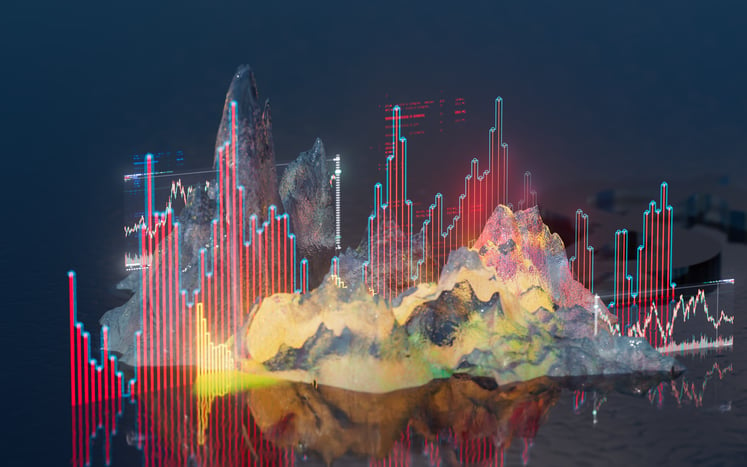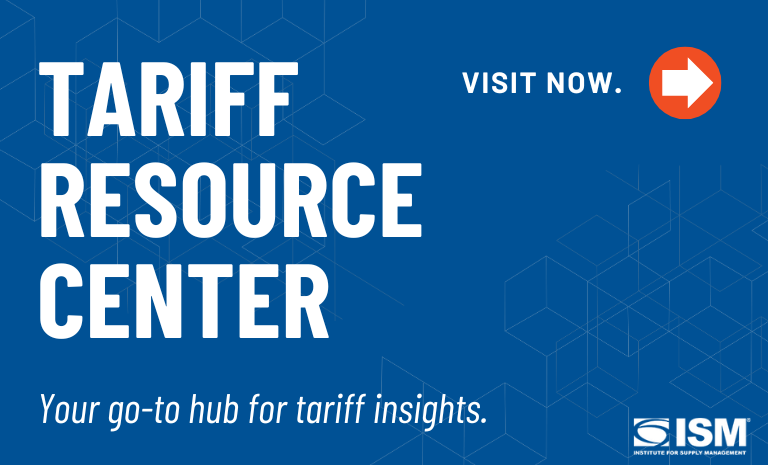Strategies to Strengthen Procurement Amid Tariffs Turbulence

On a global level, tariffs and trade restrictions aren’t new. Protectionist policies globally have become more prevalent and, in 2023, numbered about 3,000 — three times more than the 2019 amount, according to International Monetary Fund data.
“Then, add tensions between the U.S. and China,” said forecaster Jason Schenker, chair of The Futurist Institute and president of Prestige Economics. He added, “We are in the middle of Cold War II.”
Schenker was one of three panelists featured during “Trump’s Tariffs: Strategies to Strengthen Supply Chain & Procurement Operations,” a webinar held last week by Reuters Events. Other speakers were Sophie Lily Weinstein, general councilor at the World Trade Organization, and Manuele Burdese, vice president, global procurement at Thermo Fisher Scientific.
To keep on top of and manage all the restrictions, tariffs and other disruption in global trade, procurement and supply chain leaders should diversify their supply chains and invest in technology, among other measures, they said.
The Impact of Tariffs
The tariffs have created incredibly market uncertainty, Weinstein said. “It realigns how we understand geopolitics and geopolitical trade when you have one government assert itself to the degree the U.S. has,” she said.
Because of the uncertainty — and that the Trump administration continues to change its position on tariffs, or delay them — companies and organizations are unable to create a strategy or a year-end debt quota, she said.
Tariffs exposure and disruption differs by company and industry, as well as where production takes place, said moderator Ed Brzytwa, vice president of international trade at the Consumer Technology Association. “When I when I think about things the U.S. can’t produce or won’t be able to produce in the future, the tariffs are going to have an even greater impact,” he said. “The obvious examples are bananas and coffee, but there are plenty of other examples.”
A poll of webinar attendees found that nearly half (48 percent) said that recent tariffs had significantly impacted their business operations and industries, with 29 percent saying moderately, 16 slightly and 7 percent not at all.
Mitigating the Risks of Uncertainty
While some solutions may vary depending on the company and industry, there are mitigation strategies that any organization can employ, Burdese said:
A well-thought-out plan. It’s important to have a strategic sourcing approach in place before a critical situation occurs, he said. “Work very deeply (to) understand the industry you need to monitor and the suppliers in your supply base, and think about solutions in advance,” he said.
A diversified supply base. Qualifying alternative sources and working with multiple suppliers in different countries are also key. “Focus on where you’re putting your footprint, because you are attracting the entire supply chain of your inbound (goods and materials).”
Consider where you do business and where your production or operation sites are located when diversifying.
Strategic partnerships. “At this moment, you will benefit from a supplier you have cultivated and that has a legacy with your organization, but also suppliers that have invested in diversifying their own supply chain and that will follow you to different parts of the world from a manufacturing point of view,” Burdese said.
Thus, an organization will be able to engage in a sophisticated, strategic relationship, rather than a tactical or transactional one.
Such a framework will enable an organization to manage critical disruptions with little impact, Burdese said.
A second poll of webinar attendees found that 49 percent were actively diversifying their supply chains, while 28 percent were considering doing so. Twelve percent said they had not yet diversified but were planning to, and 10 percent indicated they weren’t considering diversifying their supply bases.
Other considerations to drive optimal solutions that minimize cost and disruption include an established data strategy and investing in technology.
While there is much hype about artificial intelligence (AI), it is only one part of the equation, Weinstein said. She noted that organizations should consider a broad scope of technology, including AI as well as the Internet of Things, machine learning and blockchain.

